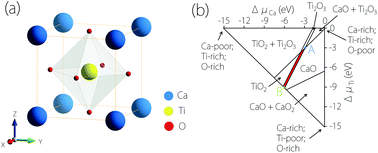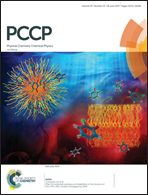Tailoring lanthanide doping in perovskite CaTiO3 for luminescence applications†
Abstract
Perovskite oxide materials have been attracting significant attention due to their rich physical and chemical properties. With its proven stability and bio-compatibility, we suggest the lanthanide-doped perovskite to be a promising material for biological luminescence applications. Here, taking CaTiO3 as a concrete example, we systematically investigate its doping properties using first-principles computational methods. We determine the conditions allowing the growth of CaTiO3 against various competing phases. We obtain the formation energies of various intrinsic point defects in the material. The doping configuration and the charge state of the lanthanide dopants are determined. We find that for heavier elements in the lanthanide family, the substitution at the Ca site is favored under p-type growth conditions and tends to be trivalent, whereas the substitution at the Ti site is favored under n-type growth conditions and tends to be divalent. And for lighter elements in the family, the substitution at the Ca site is more favored for most cases and the dopant is more likely to be trivalent. By tuning the growth conditions, one could control the valence state of the lanthanide dopant, which in turn controls the luminescence spectra. We collect and identify the emission peaks in the infrared biological window, based on which possible doping schemes are suggested for bio-labeling and imaging applications.



 Please wait while we load your content...
Please wait while we load your content...